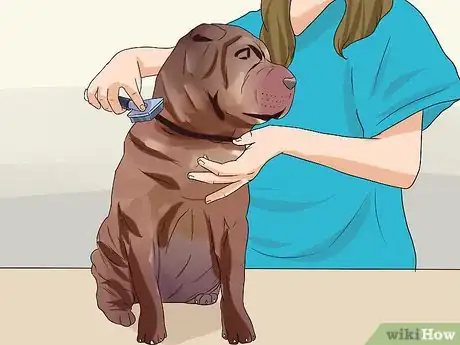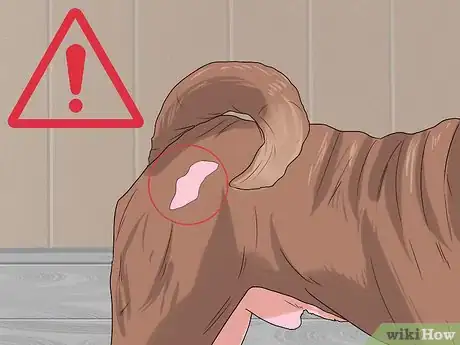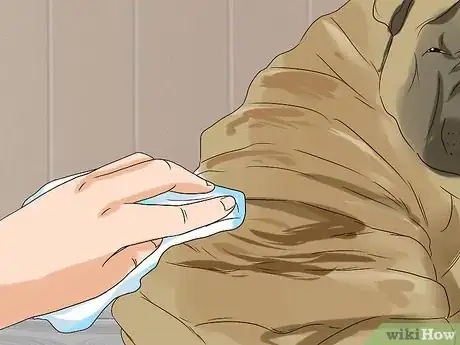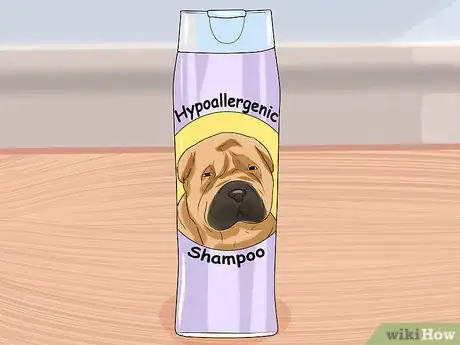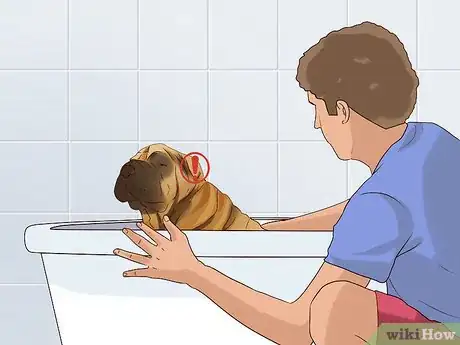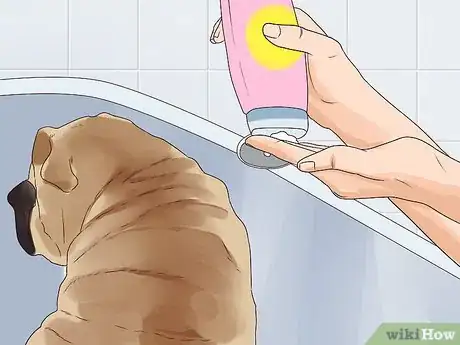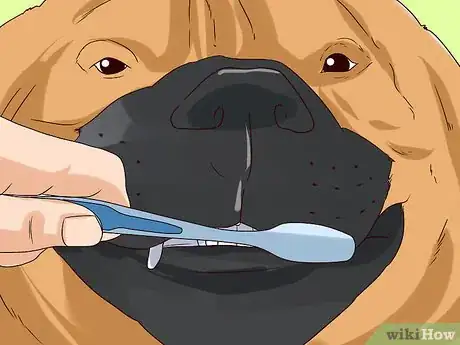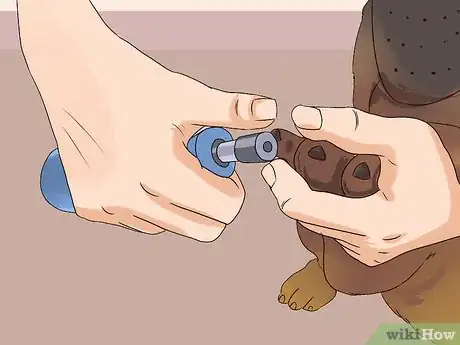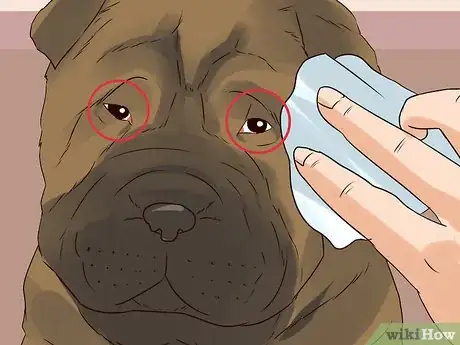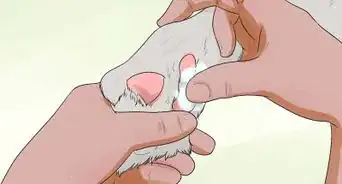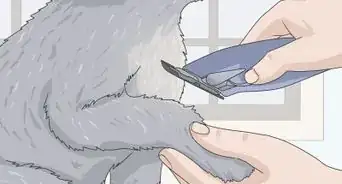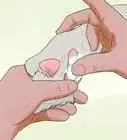This article was co-authored by Lauren Baker, DVM, PhD. Dr. Lauren Baker is a Veterinarian and Assistant Scientist at the University of Wisconsin-Madison. With over 10 years in veterinary medicine, she specializes in the concept of “one health,” which uses insights from veterinary medicine to help human medical research. She holds a Ph.D. in Comparative Biomedical Sciences, a Doctor of Veterinary Medicine, an MS in Comparative Biomedical Sciences, and a Bachelor’s degree in Psychology from the University of Wisconsin-Madison.
There are 9 references cited in this article, which can be found at the bottom of the page.
This article has been viewed 26,729 times.
Chinese Shar-Peis are known for their characteristic wrinkly skin and square heads.[1] Their fur is bristly and varies in length, from a shorter “horse” coat to a longer “brush coat.” With their pronounced wrinkles, Shar-Peis are more prone to skin irritation and infections. They are naturally very clean dogs and won’t need to be bathed frequently, making them a relatively easy dog to groom.
Steps
Brushing the Coat
-
1Keep your Shar-Pei on a grooming table or the floor. When you’re ready to begin brushing their coat, you want your dog to be in a secure area that will be easy to clean. Since brushing will remove some dead skin and hair, the area should be easy to clean, like a tile floor. Remove any accessories your dog has on, like a collar, so you can brush the entire coat.
-
2Brush their coat. The majority of Shar-Peis have a short and bristly coat where the individual hairs stick straight out. Their coats do not need to be trimmed, brushing is essential to remove dead hair.[2] A rubber-bristled brush is gentle on their skin but will still remove dead hair effectively.[3] Brush their entire coat in the direction that the hair grows.Advertisement
-
3Check their skin for irritation. Shar-Peis are prone to skin irritation, which can lead to infections and more serious medical concerns. While you are grooming and brushing your dog, look for any signs of infection or irritation, like redness, swelling, sores, scabs, pimples, or blisters. Many Shar-Peis have allergies that aggravate their skin. Take note if your dog spends a lot of time scratching or intensely itching a certain area since this could indicate allergies.[4]
- By examining their skin weekly, you’ll be able to identify problems early on and bring them to the veterinarian.
-
4Wipe their skin folds. The wrinkles on the Sharp-Pei’s coat should be cleaned and dried each day. Take a damp cloth and wipe the skin folds, examining each area for any growths, sores, redness, and irritation. After each fold has been wiped, use a soft, dry cloth to dry each area. The skin folds around the face and muzzle are the most likely to develop irritation, since these folds tend to be deeper and more prominent.[5]
Bathing
-
1Choose a hypoallergenic and gentle shampoo. Shar-Peis have very sensitive skin that can become easily irritated by harsh chemicals and fragrances. Look for a high quality pet shampoo that is hypoallergenic and good for sensitive skin. Avoid shampoos with strong fragrances, since these can irritate the skin.[6]
- Hypoallergenic shampoos for dogs are easy to find online and in pet stores, but ask your veterinarian for recommendations if you are unsure of a good product to use.
-
2Place the dog in a bathtub. When you’re ready to bathe your Shar-Pei, you’ll want to put them in the bathtub. Use warm, but not hot, water to wet their coats. Avoid getting any water into their ears since this can lead to ear infections and irritation.[7]
-
3Wash their fur. Using the hypoallergenic shampoo, wash the dog’s entire coat. Be extra careful washing around their face, especially the eyes and ears, since these areas are prone to irritation. Put a small amount of shampoo into your hands and work it into a lather. Massage the shampoo into the fur, making sure you pay attention to any dirty areas, like their paws.
-
4Dry their fur. This is the more difficult part of the bathing process. You need to make sure that there is no residual moisture left over from the bath in the skin folds, otherwise a skin infection could occur. Most Shar-Peis lose the majority of their wrinkles as they get older, though different dogs have more wrinkles than others.[8] You can use either a towel or a blow dryer to completely dry your dog’s coat.
-
5Bathe your dog every three weeks. Shar-Peis are very clean dogs and have little odor, so you do not need to bathe them frequently. You can bathe them every three weeks, as long as they haven’t gotten muddy or rolled around in something smelly.[9]
- Too frequent bathing can lead to dryness, skin irritation, and can exacerbate a dog’s allergies.
Grooming
-
1Brush their teeth. Daily brushing is ideal, but brush their teeth at least two to three times a week to help prevent periodontal disease and tooth decay.[10] Take a toothpaste that is specifically made for dogs and a soft toothbrush. Gently brush your dog’s teeth while you examine their mouth for any signs of disease, like tooth decay or sores.
-
2Trim their nails. Unless you regularly walk your Shar-Pei on pavement, their nails will need to be trimmed every month. A good way to tell that your dog needs their nails trimmed is to listen for any clicking when they walk on a hard surface, like tile. Trim their nails using a guillotine or scissor style nail clipper and cut a small portion of the nail. You want to avoid the quick, which is a vein that runs through the nail delivering its blood supply.[11]
- It can be more difficult to locate the quick on black nails, so be very careful and only cut small pieces of nail at a time. Have styptic powder and cotton balls handy in case you cut the quick so you can stop the blood flow.
- Shar-Peis are also prone to toe infections that are caused when the short hairs on their paws become impacted. While you’re clipping their nails, keep an eye out for any signs of irritation.[12]
-
3Check their ears. Shar-Pei ears typically have small ears that sit at the top of their head. Folded ears tend to be more prone to ear infections, but you should check your dog’s ears once a week as a part of your grooming routine. Look for any signs of redness or bad odor, which could indicate an infection.[13] Each time you check their ears, wipe them with a cotton ball that has been dampened with a pH-balanced ear cleaner.
- Do not stick anything into their ear canal, like a cotton swab. Only clean the outer portions of the ear.
-
4Wipe their eyes. Shar-Peis have deep set eyes that often have folds of skin that hang over them. They are very prone to eye diseases and infections, since these flaps of skin can be breeding grounds for bacteria. Check your Shar-Pei’s eyes at least once a week for any blisters, sores, pus, and redness. Use a pH-balanced and gentle cleaning solution on a soft cloth to wipe their eyes.[14] Consult your veterinarian about products that are safe to use around your dog’s eyes.
References
- ↑ http://www.dogbreedinfo.com/sharpei.htm
- ↑ http://www.dogbreedinfo.com/sharpei.htm
- ↑ http://www.allpawspetwash.com/diy-dog-grooming.html
- ↑ http://www.sharpeirescue.com/shar-pei-facts/health-and-care.html
- ↑ http://www.pets4homes.co.uk/pet-advice/caring-for-a-shar-pei-dog.html
- ↑ http://www.pets4homes.co.uk/pet-advice/caring-for-a-shar-pei-dog.html
- ↑ http://dogtime.com/dog-breeds/chinese-shar-pei#/slide/
- ↑ http://dogtime.com/dog-breeds/chinese-shar-pei#/slide/1
- ↑ http://dogtime.com/dog-breeds/chinese-shar-pei#/slide/1
- ↑ http://dogtime.com/dog-breeds/chinese-shar-pei#/slide/1
- ↑ https://dogs.thefuntimesguide.com/how_to_trim_dog_nails/
- ↑ http://www.pets4homes.co.uk/pet-advice/caring-for-a-shar-pei-dog.html
- ↑ http://dogtime.com/dog-breeds/chinese-shar-pei#/slide/1
- ↑ http://www.yourpurebredpuppy.com/health/chinesesharpei.html
- ↑ http://iheartdogs.com/3-simple-ways-to-keep-your-shar-peis-teeth-clean/
About This Article
To groom a Chinese Shar-Pei, start by brushing its entire coat with a rubber-bristled brush every day. As you're brushing the fur, check your dog's skin for signs of infection or irritation, since many Shar-Peis have allergies that can cause skin problems. Next, gently wipe the dog's skin folds with a damp cloth, paying special attention to the deep folds around the face and muzzle. It's also ideal to brush a Shar-Pei's teeth two to three times a week to prevent periodontal disease and tooth decay. For more tips from our Veterinary co-author, like how to bathe your Shar-Pei, read on!

